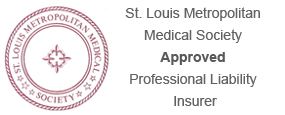If it isn’t written, it wasn’t done.
Nowhere is this maxim more applicable than medical charting. However, these days documenting a visit in the usual SOAP format (Subjective, Objective, Assessment, Plan) may not be enough, as adroit plaintiffs’ attorneys fill in blanks in the charting with explanations far from your thought process, but believable to a jury. These same plaintiffs’ attorneys, however, might refuse to take a case with the exact same set of facts if the charting is thorough enough to leave no nefarious explanations.
Charting is most often attacked in failure to diagnose claims. More specifically, charting is most often attacked in claims relating to failure to diagnose breast cancer, colon cancer, lung cancer, appendicitis, and heart disease. But with patients with these conditions often presenting with symptoms similar to more common and more likely ailments, how do you protect yourself in a case where your patient is the unfortunate one that is suffering from a more serious condition? Adhering to the following practices will help you avoid the stress of a claim by simply improving the content of your charts.
Quote Them. First, write down what your patient says; not your interpretation of the patient’s compliant, but the actual complaint. Patients can often create vivid explanations of their symptoms. By writing these down, verbatim, you are both getting the most accurate description and demonstrating to any future readers of the record that you were listening intently to your patient. Such documentation forecloses a future plaintiff’s argument that you simply burst into the room, briefly looked at the chart, and proclaimed a diagnosis without interacting with the patient.
Show Your Work. If your note only contains a list of complaints, your objective findings, and then a differential diagnosis, you would have good reason to be nervous if the actual ailment is different than your diagnosis. Documenting that you considered other diagnoses before reaching your best judgment of what the patient was experiencing, and why you believe that diagnosis is correct, will scare away attorneys that thrive on exploiting a lack of information. Even if the diagnosis turns out to be incorrect, providing documentation of your thought process at the time of the examination is much more credible to a jury than a potentially self-serving explanation during a deposition years later.
Keep Their Mind Open. Too often, patients will receive a diagnosis and adhere to that diagnosis as absolute and unchangeable, regardless of additional symptoms. Appendicitis patients often say their doctor told them it was a “stomach bug” that might get worse before it gets better, so they figured it was just getting worse. To avoid hearing this statement from the witness stand, note that you discussed other possibilities with the patient and they understood that your diagnosis was your best professional judgment of their ailment based upon their presentation.
Give Them Homework. Since your diagnosis is your best professional judgment of the patient’s condition based upon the information available to you at the time, make sure the patient understands that their illness may develop in a manner inconsistent to the diagnosis, and they need to be prepared in the event it does. Again using appendicitis as an example, a note that states you discussed that appendicitis is unlikely, but symptoms and a plan of action in the event those symptoms developed were addressed and understood will go a long way to fending off a claim. If the note says “we discussed doing ABC if XYZ occurs,” XYZ occurs, and the patient did not do ABC, jurors will often question what more the doctor was supposed to do.
Note Agreement. While the usual conclusion of a note, “patient understands and agrees,” may be enough to document assent, more thorough notations of understanding and agreement will more effectively fight off claims. Noting what the patient understands and to what they are agreeing, if possible, will move a heavy burden from you to them. For example, the following note leaves no doubt regarding what was discussed and understood:
“patient understands the diagnosis of gastroenteritis, but also understands that appendicitis, while unlikely given his presentation, cannot be ruled out. Patient agrees to return if symptoms do not subside in 3 days or sooner of the pain increases”
Additionally, noting the patient’s individual statement indicating consent, such as “I got it” or “you bet” will give pause to any plaintiff or attorney hoping to argue no understanding or agreement was reached.
Of course, even the most thorough notes are challenged and sloppy documentation goes unchecked. There is no way to completely immunize yourself. However, applying these slight tweaks to your documentation practices can go a long way towards making you a much less attractive target for a claim.


